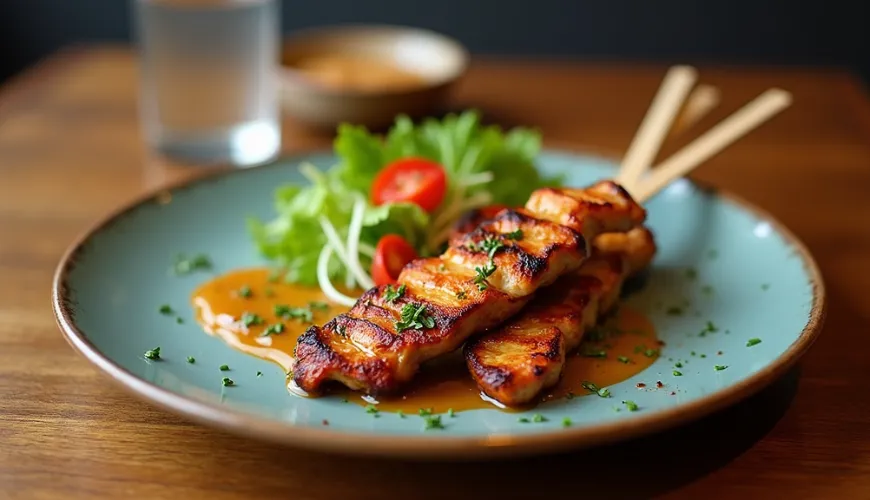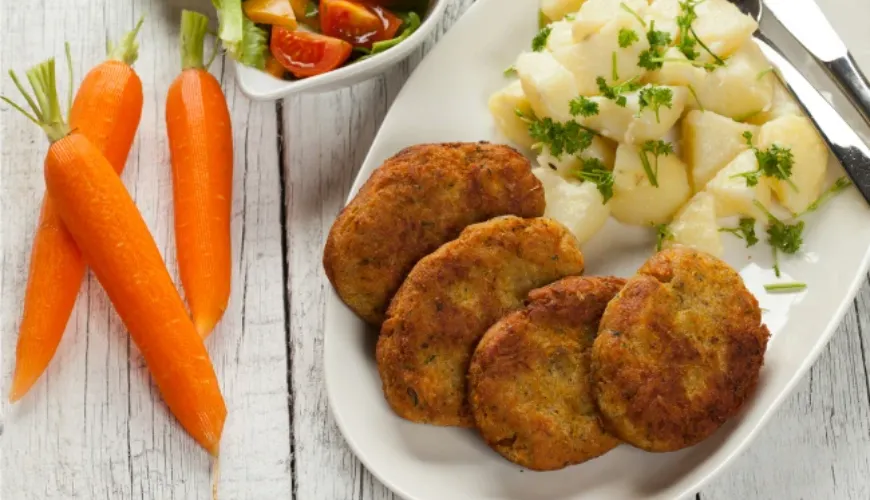
Chicken satay as a popular dish in Czech restaurants

Asian cuisine has firmly established itself in global menus over the past decade, and the Czech Republic is no exception. Streets lined with eateries offering woks, sushi, and pho soups are complemented by restaurants that offer lesser-known but equally intriguing specialties. One dish that has gained popularity in recent years is chicken satay—marinated chicken skewers grilled to a golden brown and served with an unmistakable peanut sauce. What makes this simple dish so appealing, and why should it be part of your home kitchen?
What is chicken satay and where does it come from?
Satay, often spelled as sate, is a dish originating from Southeast Asia, primarily rooted in Indonesia, from where it spread to neighboring countries like Malaysia, Thailand, and Singapore. Within Indonesia itself, there are dozens of regional variations, each differing in marinade, meat, or sauce. Traditionally, satay is made from various types of meat—beef, lamb, fish—but chicken satay is the most popular version, mainly for its tenderness and versatility.
Imagine tender, juicy pieces of chicken soaked in an exotic spice blend—turmeric, coriander, garlic, and ginger—and then grilled until crispy with a slightly caramelized crust. It is served with a distinctive satay sauce, based on ground peanuts, coconut milk, soy sauce, and lime juice. The result is a combination that is a literal concert of flavors—sweet, salty, slightly spicy, and nutty deep.
Why is satay gaining popularity here?
While ten years ago, satay was a dish you might only taste in certain Asian restaurants, today it is starting to appear in modern eateries or even at home. And it's no wonder—chicken satay is easy to prepare, it fits well with a modern way of eating, and its ingredients can easily be adapted to vegetarian or gluten-free versions.
Thanks to the versatility of satay sauce, meat lovers can replace chicken with tofu or tempeh, add grilled vegetables, or serve the sauce as a dip for roasted potatoes. In many households, satay has become a favorite grilling dish—adding a new Asian dimension to the barbecue season.
From a nutritional standpoint, many ingredients found in satay support a healthy lifestyle. For instance, peanuts are a rich source of protein and healthy fats, and turmeric has strong anti-inflammatory effects. When combined with rice or fresh vegetables, it creates a balanced meal suitable even for those who carefully monitor their plate's composition.
How to prepare chicken satay at home?
Although satay might initially seem like a complex exotic dish, the opposite is true. Most of the ingredients can now be found in regular supermarkets or stores with healthy and Asian foods. The key to success is a good marinade and a well-prepared satay sauce. Many people like the sauce so much that they use it beyond this recipe—for noodles, in sandwiches, or as a base for stir-fry sauces.
Here's a simplified example of home preparation:
Ingredients for the marinade:
- 500 g chicken breast, cut into strips
- 2 tablespoons soy sauce
- 1 tablespoon fish sauce
- 1 teaspoon ground turmeric
- 1 teaspoon brown sugar
- 2 cloves of garlic
- 1 cm fresh ginger (finely chopped)
For the satay sauce:
- 100 g unsalted peanuts (roasted)
- 200 ml coconut milk
- 1 tablespoon soy sauce
- 1 tablespoon brown sugar
- juice of ½ lime
- chili to taste
Marinate the meat ideally for several hours, but even half an hour will do. Then skewer the pieces and grill or pan-fry until golden brown. Meanwhile, blend the sauce ingredients in a mixer and briefly cook it until it thickens.
Satay as an experience—not just food, but culture
When looking at satay, it's not just a dish but a cultural symbol of Indonesia and all of Southeast Asia. In local markets, it's common to see long rows of grills, with the aroma of smoke, spices, and meat wafting above them. Every chef has their secret marinade recipe, which they carefully guard. In Malaysia, satay is a staple of celebrations, in Thailand it's popular as street food, and in Singapore it's often served during festivals. Moreover, satay has its vegetarian version, which is just as delicious and popular.
A real-world example of satay's function could be a Czech family that has adopted this dish as a weekend tradition. The mother prepares the marinade, the children skewer the meat, and the father takes care of the grill. At a shared dinner, everyone enjoys what they've prepared. Such food connects—not only in taste but also in experience.
"Food is the most direct way to experience another culture," as chef Anthony Bourdain once said—and satay is a great example of bringing a piece of Asia into your home.
How to enjoy satay sustainably?
At a time when more and more people are looking for ways to eat deliciously while being considerate of the planet, it's important to mention the ecological aspect of this dish. Chicken satay can easily be prepared in a plant-based version—for example, with tofu, tempeh, or jackfruit. The peanut sauce remains the same, as does the flavor experience. Using plant-based alternatives not only reduces the carbon footprint but also opens the door for those following a vegetarian or vegan diet.
A sustainable approach can also mean choosing quality ingredients—such as organic free-range chicken, natural soy sauce without added glutamate, or fair trade coconut milk. On an e-shop like Ferwer, which specializes in products for a healthy lifestyle and an ecological household, you can find all the necessary ingredients in more responsible versions. And that can be the first step towards making everyday cooking not just about taste, but also about attitude.
Thus, satay is not just another recipe in the collection—it's a small journey into a world of flavors, cultures, and a sustainable approach to food. Whether you prepare it classically with chicken or in a modern vegan version, one thing is certain—satay will captivate you with its simplicity and explosion of flavors.

